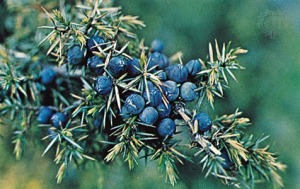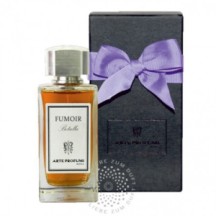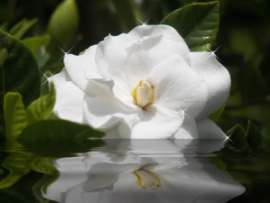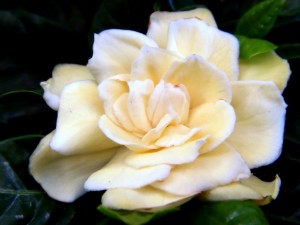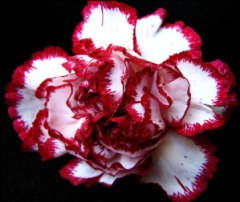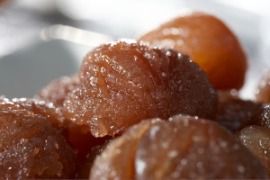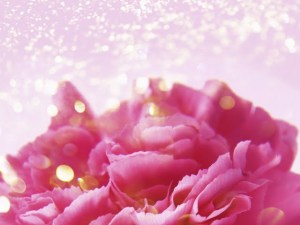My Reviews en Bref are for fragrances that — for whatever reason — didn’t seem to merit one of my detailed, exhaustive, full reviews. In the case of Irish Leather from Memo Paris, it’s because I couldn’t bear to leave it on my skin.
Memo Paris is a niche line based in Paris. None of its scents are sold in the U.S., but I got to try a few while on holiday, and there were two I rather enjoyed. However, my appreciation was tempered by the fact that at least one of them contained ISO E Super, which I loathe with the passion of a thousand fiery suns. The rest of the line also seemed replete with the aromachemical, so I never bothered to get a sample. Recently, Surrender to Chance began carrying the line, so I ordered Irish Leather.
The main reason was because of the incredibly evocative, romantic way that Memo describes Irish Leather on its website. The company’s co-founder, John Molloy, is Irish and he clearly wanted to convey the feel of his home country:
It’s one of those icy, biting mornings. The sun scarcely manages to break through the heavy grey clouds. The air is crisp and dry, and the wind slips beneath my clothes. The North wind whips the grass that sticks to my boots. I walk into the stable and swing open the wooden tack room doors, freeing the burning scent of leather, wood, amber and honey. Its age-old odor stands out sharply in the frozen morning air. My horse whinnies softly. It’s the smell of her freedom. The leather gathers in the wind, the grass warms with the wood. Irish Leather gallops off into the horizon.
According to Fragrantica, the notes in Irish Leather are:
juniper berries, amber, leather, mate and tonka bean.
However, the company has quite a different list:
Pink pepper, oil of clary sage, juniper berry, green maté absolute, oil of flouve, iris concrete, tonka bean absolute, leather accord, oil of birch, amber accord.
It might be worth a brief description of some of those less commonly known notes. According to Fragrantica, maté is a South American tree whose leaves are used for tea. They have a very herbal, bitter, and/or grassy aroma. A Google search for Flouve turned up a Wikipedia page for something called “Anthoxanthum odoratum, known as sweet vernal grass, holy grass, vanilla grass or buffalo grass.” The scent is apparently dominated by coumarin, and smells “like fresh hay with a hint of vanilla.” As for clary sage, it is a plant with a very herbal profile that sometimes smells a little lavendery. It also can have soapy and slightly medicinal tonalities. On occasion, it can have a leathery undertone as well.
All that is fine and dandy, but you’d rather expect a scent named Irish Leather to smell of the eponymous note. Not on my skin. Not on any of the numerous occasions where I tried it, only to give up in a deluge of Chamomile tea, green herbs, grass and, yes, ISO E Supercrappy. So, so, so much ISO E Super. I have now tried Irish Leather four times, and four times I have scrubbed it off. I have never gotten past the 5 hour stage before I finally succumbed, but at no point in those 5 hours did I ever smell leather.
Now, I fully realise that I am much more sensitive to aromachemicals than the average person. I also realise that the vast majority of people can’t smell ISO E Super. I really wish I were in their boat. All I can say is that, most of the time, I can put up with a lot of aromachemicals, despite my issues with them and despite the fact that they can give me a headache when an extremely large quantity is used. I will put up with it for the sake of a full, comprehensive review when the rest of the perfume’s notes have promise or are good enough to endure the misery.
That was not the case with Irish Leather. There is absolutely nothing that I found interesting enough to warrant a 5th attempt that would take me all the way to the end. It has nothing to do with the headache, the number of Tylenols I was popping, or my sensitivity to the aromachemical. Irish Leather is simply not all that interesting a perfume, especially for its high price and accessibility issues. There is something particularly irritating (not to mention disorienting) about wearing a scent that is meant to evoke leather and horses, only to smell of Chamomile tea, herbs and crappy chemicals.
Irish Leather opens on my skin with juniper berries that recreate the scent of gin, followed by massive, walloping amounts of ISO E Super, and green notes. There are fresh green herbs, maté which strongly resembles chamomile tea, grass, and a touch of sweet hay. The primary bouquet is of the green maté tea aroma, with fresh gin, herbs, and ISO E Super. The latter has a chemical, rubbing alcohol vibe that is so strong, it completely flattens the other grassy tonalities.
Irish Leather is very light and airy, but the ISO E molecules are so large and, more importantly, the quantity is so vast that I continuously have to sniff dried coffee in order to clear my nose. ISO E has the tendency to block out the nose’s smell receptors when it comes to the other molecules, the way an eclipse can block out the sun. On occasion, the size of the molecules can even prevent the nose from noticing the overall fragrance when it is smelled up close, which is why some people can’t easily detect their own perfume while others standing at a distance have no trouble at all.
Distance helps in smelling a fragrance replete with ISO E Super, but that doesn’t do much good for me if I want to detect or single out all the nuances up close. From afar, all I can smell is chamomile tea, green tonalities that are primarily herbal in nature, and the chemical. Unfortunately, up close, even after clearing my nose with coffee, that is all I smell as well. Leather? Nary a whisper of it. I feel as though I’m wearing one of Ormonde Jayne’s green scents (she likes maté a lot as well), only this one has the ISO E Super quadrupled. For the most part, I just feel as though I’m wearing chamomile tea. And I don’t like chamomile tea very much.
About 20 minutes into Irish Leather’s development, the green accords have been joined by what may be the faintest vestige of something smoky. I think. The hay element also seems stronger. I think. The perfume hovers about 2-3 inches above the skin. I think. None of this is a certainty because the ISO E Super has totally overpowered much of my ability to detect nuances, and there is nothing in the scent that is rich or dark enough to counter the chemical. My headache whenever I smell the perfume up close for too long doesn’t help either.
Somewhere in the middle of the third hour, the perfume starts to shift. It turns warmer, less crisp, green and wholly tea-like. There is a creamy and sweet element which infuses the herbal notes, along with hints of an abstract “amber” chemical. A vague suggestion of birch lurks about as well, but it is even more abstract in nature and generally feels like dry woodiness instead. Again, still no leather. None. What there is instead is a light whiff of an arid, desiccated chemical that simply becomes the very last straw for me.
I rarely last more than an hour or two past this point, though I admit that the wholly abstract, generalized, vegetal musk that creeps in near the start of the 5th hour isn’t terrible. It’s warm and slightly sweet, as though a farm’s wild grass and fresh hay have been turned creamy and golden. Unfortunately, it continues to be infused with the ISO E Super which takes on a very Ormonde Jayne lemony undertone. I still feel as though I’m wearing herbal tea, only now there is some warm cream and an abstract fake “amber” in it.
As a whole, on my skin, Irish Leather is merely random forms of vegetation — whether herbal tea, grass, Chamomile, or fresh hay — in a chemical cocktail for hours and hours. Perhaps it gets better by the end, perhaps the leather actually shows up, but I’m not being paid to undergo this experience and I draw the line somewhere.
Irish Leather is a European exclusive and is not cheap at a minimum retail price of €168 for 75 ml, with some vendors selling it as high as €190. At today’s rate of exchange, €168 comes to $233. I personally find that to be ludicrous, but then the degree of my irritation is extremely high at this point.
I generally don’t provide comparative reviews in my “En Bref” posts, but I will here because I am that irate and I want to show that my perceptions of this bloody fragrance are not the result of some idiosyncratic hatred for ISO E Supercrappy. On Fragrantica, the reviews for Irish Leather are not good, and I’ll start with the comment that also notes the massive amount of the bloody chemical:
big amount of iso e super…
..not very interesting to my nose..and actually no leather…only plus: lasting power
if you like the smell of gin & iso e super, I recommend escentric 01 over this one. if you like the synthetics more complicated, I recommend comme des garcons 2 man..
Then, the others:
- disappointing, for every leather freak a major letdown!
- I am not sure if the names matches this scent,I am almost convinced it doesn’t. Opens with a strong iris note,could be the juniper berries and dries down to a vetiver-suede combination that just doesn’t work miracles!Green,sharp,reminiscent of forests but not of horses or leather. It reminded me of Hiris by Hermes.Overall,disappointed because of my high expectations(again).More likely to suit a man,I find it too dry and harsh for a woman.Decent longevity and low sillage.
The one quasi-positive review isn’t particularly enthused either, though the commentator does try to put a good spin on the scent:
Opens with a beautiful, albeit a short-lived forest accord; juniper berries and birch. At first, the drydown is leafy&vegetal which is presumably the mate note, reminiscent of the smell of the drink complemented by iris, sage, birch and leather. Leather is quite subdued for the first three hours, but more obvious after the mate & his veggie friends fade a bit. The latter part of the drydown is vegetal leather (very similar to Montale Aoud Leather).
Although this not my cup of tea (pun not intended), I found IL interesting and enjoyable, but not something I’d wear on a regular basis. Lovers of intense leather fragrances probably won’t enjoy this, but if you like your leather with some greenness or are looking for a scent that reminds you of a walk in Nordic forest while sipping some mate, this is worth trying. Modest projection, got 6h of wear with one spray so impressive longevity!
Yes, ISO E Super can give you impressive longevity indeed. As for the eventual “vegetal” leather scent that she experienced, it doesn’t seem to overcome the “cup of tea” from the maté for most of the fragrance’s lifespan, including its drydown, by her own admission.
I refuse to spend any more time discussing this absolutely crappy “leather” fragrance. The end.






